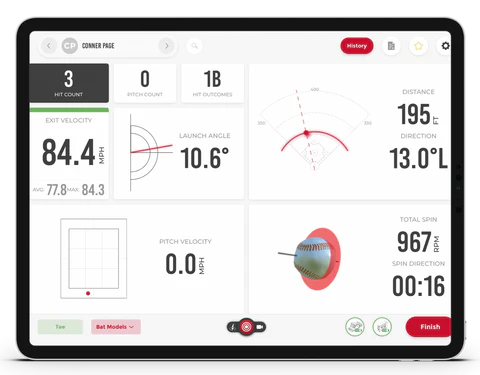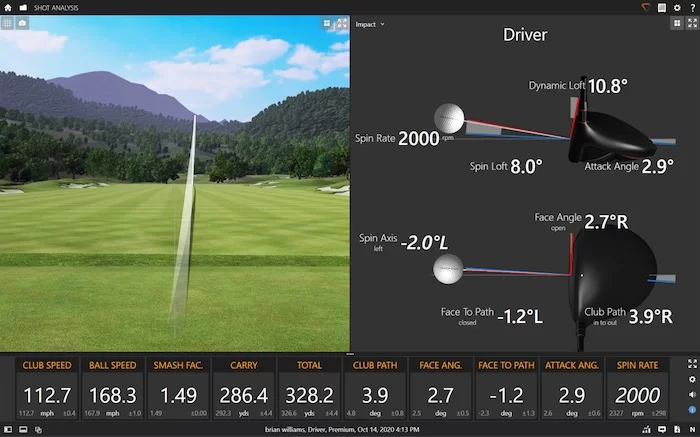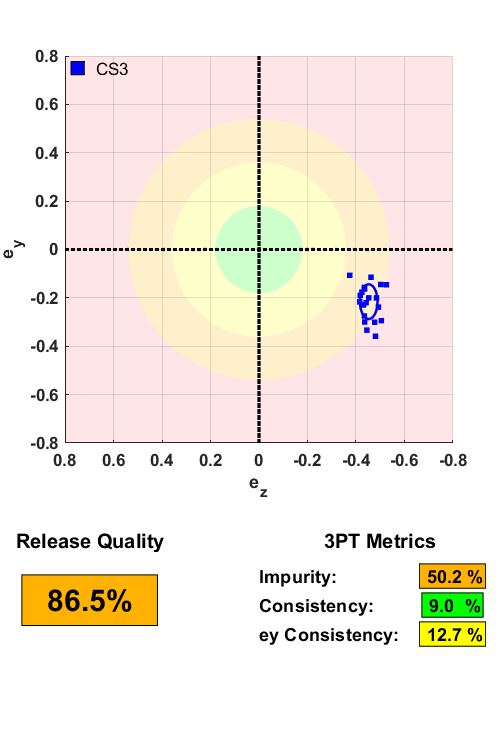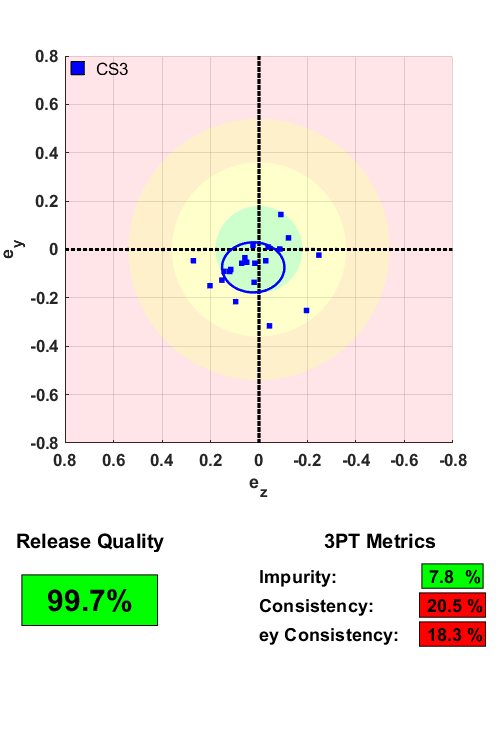In the world of sports, precision and technique are paramount. Whether it’s making a free throw on the basketball court, driving a golf ball down the fairway, or connecting with a fastball on the baseball diamond, the nuances of an athlete’s movements can make all the difference.
Enter ShotMetrics, a revolutionary approach to quantifying the art of shooting in basketball. Unlike traditional basketball analytics, which often focus on macro-scale strategies like shot selection, ShotMetrics delve deep into the mechanics of shooting, offering players and coaches a granular understanding of every aspect of their shot.
Much like the way launch angles and club face angles revolutionized golf, or bat head speeds and swing planes transformed baseball, ShotMetrics bring a new level of insight to the basketball court. By measuring and assigning metrics to various elements of a player’s shooting motion, ShotMetrics provide invaluable data to players and coaches, enabling them to pinpoint strengths, identify weaknesses, and refine their skills with unparalleled precision. In this article, we’ll explore the benefits of ShotMetrics and how they are reshaping the landscape of basketball training and performance analysis.


ADVANTAGE 1: Determining Optimal Movements
ShotMetrics offer a groundbreaking method for determining optimal movements in basketball shooting. By assigning numerical values to specific aspects of a player’s shot, ShotMetrics allow for objective comparisons between different shooting techniques. This objective approach is a game-changer, particularly in an arena where subjective opinions often dominate.
One of the most significant advantages of ShotMetrics is their ability to facilitate scientific studies aimed at analyzing various shooting movements. Researchers can now delve deep into the mechanics of shooting, conducting empirical studies to understand which movements contribute to increased shooting accuracy and which may hinder it.

Example of the Release Quality ShotMetrics for a player with a significant ThumbFlick.
This scientific approach fosters a deeper understanding of the complexities involved in shooting, moving beyond mere observation to uncover the underlying principles that govern optimal performance.
In essence, ShotMetrics represent a paradigm shift in the way shooting proficiency is assessed and optimized. By harnessing the power of quantification and scientific inquiry, ShotMetrics pave the way for a deeper understanding of optimal shooting movements, transcending the limitations of subjective observation and opinion.
ADVANTAGE 2: Measuring Consistency
Consistency is a hallmark of excellence in sports, and in basketball, the ability to replicate successful shooting mechanics reliably is crucial for sustained success. However, without the tools to quantify and analyze consistency objectively, coaches and front-office personnel often find themselves relying on limited metrics, such as field goal percentages or anecdotal observations.
ShotMetrics revolutionize the assessment of consistency by providing a precise framework for measuring and analyzing shooting motions. Unlike traditional metrics, which may only capture the end result of a shot, ShotMetrics delve into the intricacies of the shooting process, allowing coaches and analysts to evaluate how consistently players execute each element of their shot.

Example of a player with what appears to be a pure release, but inconsistent in controlling it.
And once a metric is established, objective comparison is now possible, and consistency is quantified.
Prior to the advent of ShotMetrics, assessing consistency was fraught with challenges. Coaches and scouts were often limited to observing players in practice settings or reviewing season statistics, both of which had significant limitations. Practice sessions typically lack the intensity and pressure of game situations, while season statistics can be influenced by numerous variables unrelated to shooting mechanics.
With ShotMetrics, however, quantifying shooting mechanics opens up a new realm of possibilities for evaluating consistency. By analyzing data on how consistently players repeat different parts of their shooting motion, coaches and analysts gain unprecedented insight into the reliability of a player’s technique. This granular understanding allows for targeted interventions to address any inconsistencies and optimize performance.
In essence, ShotMetrics offer a pathway to objective measurement in the realm of shooting consistency. By moving beyond traditional metrics and embracing the power of quantification, coaches and front-office personnel can make more informed decisions, ultimately leading to improved player performance and team success.
ADVANTAGE 3: Accountability
Accountability lies at the heart of athletic development, and in the realm of basketball, the journey toward improvement is often guided by the subjective assessments of players and coaches. However, the advent of ShotMetrics introduces a new era of accountability, grounded in tangible evidence and empirical data.
In the absence of ShotMetrics, determining areas for improvement relied heavily on subjective opinions. Players and coaches would assess performance based on personal observations and insights, often leading to a degree of ambiguity and bias. Moreover, the inherent desire to paint a positive picture of development could cloud judgment, potentially hindering progress.

Example of the relationship between arc and velocity in a weaker shooter.
ShotMetrics fundamentally alter this landscape by providing players and coaches with objective data to inform their assessments. Rather than relying solely on opinions, decisions about areas for improvement are now supported by concrete evidence derived from quantified shooting metrics. This newfound accountability ensures that interventions are targeted and effective, leading to more efficient and impactful development.
Furthermore, ShotMetrics serve as a valuable tool for evaluating the efficacy of coaching interventions. By tracking changes in shooting mechanics over time, coaches can gauge whether their guidance is producing the desired results. This feedback loop enhances accountability on both sides, empowering players to take ownership of their development while holding coaches accountable for their methods and strategies.
In essence, ShotMetrics magnify accountability in the realm of basketball development. By grounding assessments and interventions in objective data, players and coaches are guided toward more accurate and effective solutions, ultimately fostering continuous improvement and success.
Conclusion
In the ever-evolving landscape of basketball training and performance analysis, ShotMetrics stand as a beacon of innovation and progress. By quantifying the nuances of shooting mechanics, ShotMetrics offer players and coaches a powerful tool for enhancing their understanding, optimizing their performance, and achieving their full potential on the court.
From determining optimal movements to measuring consistency and enhancing accountability, ShotMetrics provide invaluable insights that transcend the limitations of subjective observation and opinion. With ShotMetrics, the path to improvement is illuminated by tangible evidence and informed by scientific inquiry, leading to more targeted interventions and more significant strides toward excellence.
As we continue to unlock the potential of ShotMetrics, the opportunities for growth and development in basketball are boundless. Whether you’re a player striving to refine your technique or a coach seeking to unlock the full potential of your team, ShotMetrics offer a pathway to success like never before.
Ready to elevate your game with ShotMetrics? Reach out to NBA Shooting Coach Dave Love to learn more about how ShotMetrics can revolutionize your approach to shooting and take your skills to new heights. Together, let’s embark on a journey of discovery, improvement, and success.



